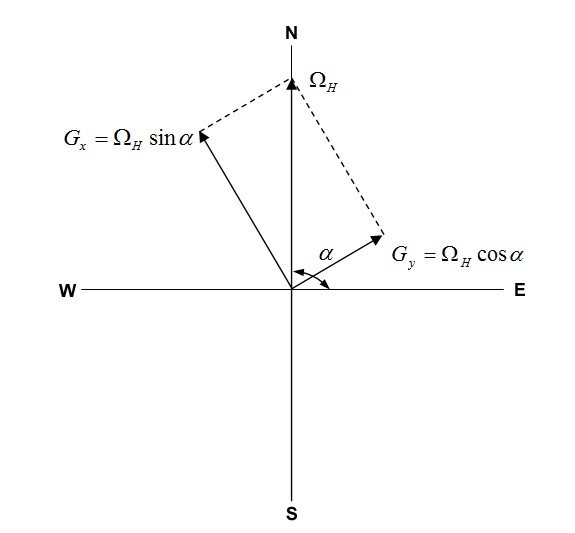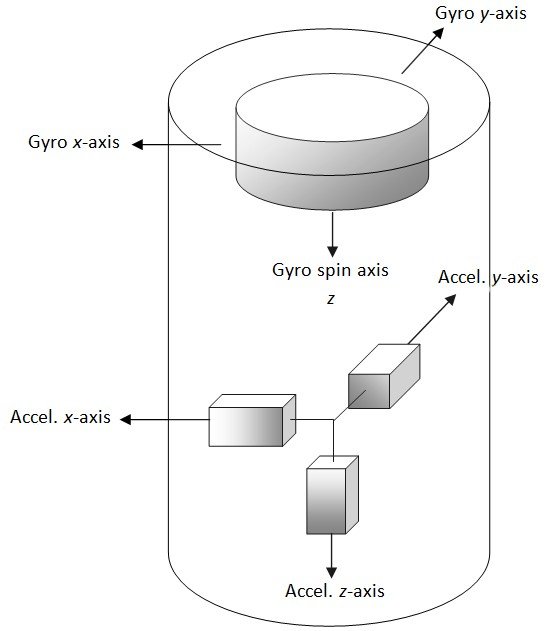So how does the ability to measure rates of rotation help us to determine borehole azimuth? For ease of explanation and understanding of the methods used in a gyro survey system, consider first the simple case in which a dual-axis gyro is mounted with its spin axis vertical so that its input axes measure the horizontal component of Earth’s rate as depicted below.
Calculate the gyro measurement about the axes -
x-axis; Gx = ΩH sin α
y-axis; Gy = ΩH cos α.
It can be seen that the ratio of the x-axis measurement to the y-axis measurement defines the tangent of the direction (α) in which the y axis points with respect to the true north.

In most practical constructions of rate gyro survey tools, sensors are attached rigidly to the tool with the result that the input axis of the rate gyro takes measurements in the plane perpendicular to the tool axis; not in the local horizontal plane. Therefore, direct measurements of the horizontal components of Earth’s rate are only generated when the tool is vertical.
In general, the output from the gyro measures components of Earth’s rate which include both vertical and horizontal components.
In order to define the azimuth direction of a bore-hole in which the tool is located, it is necessary to have knowledge of the direction in which the gyro input axes are pointing with respect to the horizontal Earth’s rate vector. This may be specified in terms of the inclination of the well and the orientation of the gyro input axes with respect to the high-side of the borehole. This information can be determined using accelerometers installed in the tool with their input axes aligned parallel to the axes of the gyro as shown schematically below.

The accelerometers provide measurements of the xyz-components of the specific force acting on the tool due to gravity (Ax Ay Az). The outputs from the accelerometer allow the inclination (I) to be calculated in accordance with the following equation.

The accelerometer outputs are also used to determine the relation between the input axis of the rate gyro at each measurement position and the high-side of the hole, often referred to as the high-side tool-face angle (TF), as follows.

Given this information, the azimuth angle (A) can be computed as a function of the gyro measurements, the inclination and tool-face angles and the vertical component of Earth’s rate using the following equation.

Summary: The rate gyro survey tool uses accelerometers to measure components of the specific force due to gravity; these data are used to compute borehole inclination and to determine the position of all the sensors axes with respect to the high-side of the hole. The rate gyro is used to sense and accurately measure components of the Earth’s spin rate from which the azimuth can be calculated. The horizontal component of Earth’s rate always points to TRUE NORTH.


Post your comment on this topic.